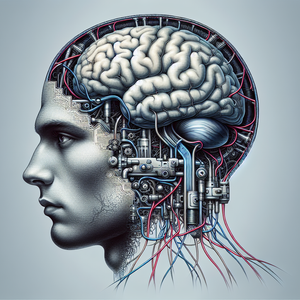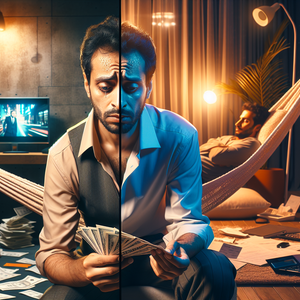The Art of Fear: Nosferatu's Influence on Modern Horror

One of the most noteworthy attributes of "Nosferatu" is its skillful creation of a haunting atmosphere. Murnau's ability to evoke dread is accomplished through a combination of unsettling visuals, stark contrasts, and a haunting score. The natural landscapes depicted in the film serve as a stark backdrop to the grotesque figure of Count Orlok, creating an unsettling juxtaposition that heightens the film's eerie tone. Contemporary filmmakers have drawn inspiration from Murnau’s atmospheric mastery. Robert Eggers' "The Witch" (2015) is a prime example, utilizing dim lighting and a natural soundscape to cultivate an oppressive environment that feels both historical and otherworldly. The sense of isolation and impending doom in "The Witch" mirrors the dread that permeates "Nosferatu." Similarly, Ari Aster’s "Hereditary" (2018) employs a slow-building atmosphere of unease, crafting a world where fear lurks just beneath the surface. Both films exemplify how the atmospheric techniques pioneered in "Nosferatu" are still effectively employed to immerse audiences in a haunting experience.
Character Design: The Archetype of the Monster
Count Orlok, portrayed by Max Schreck, is a defining figure in horror cinema, embodying the archetype of the vampire as a creature of fear and revulsion. His elongated features, sharp claws, and unsettling presence have influenced countless representations of vampires and monsters in film and literature. The grotesque visual design of Orlok emphasizes the horror within, establishing a template for memorable antagonists in modern storytelling. For example, in "What We Do in the Shadows" (2014), a mockumentary that both pays homage to and subverts traditional vampire tropes, the character designs evoke a blend of humor and horror. The elder vampire figures—designs that reflect both the timelessness and the grotesqueness of their nature—pay tribute to Orlok's terrifying visage. Similarly, in "It Follows" (2014), the entity that stalks the protagonist is characterized by its ambiguous and unsettling appearance, reminiscent of Orlok’s design. This demonstrates how the essence of fear can be distilled into character design, with modern filmmakers continuing to explore the complexities of monstrosity first introduced in "Nosferatu."
The Use of Shadows: A Cinematic Language of Fear
Perhaps the most innovative aspect of "Nosferatu" is its masterful use of shadows to create tension and evoke fear. Cinematographer Fritz Arno Wagner employed chiaroscuro lighting techniques that cast ominous shadows, enhancing the themes of dread and the unknown. The iconic scene of Orlok's shadow creeping up the staircase serves as a masterclass in visual storytelling, illustrating how shadows can take on a life of their own, representing fear itself. Modern horror filmmakers have embraced this technique, recognizing the power of shadows to evoke emotions. In "The Babadook" (2014), director Jennifer Kent utilizes shadows to cultivate a sense of foreboding, as the titular creature lurks in the dark corners of the protagonist's home. Similarly, in "A Quiet Place" (2018), the use of darkness and quiet moments amplifies suspense, emphasizing the unseen threats that lurk just out of sight—much like the shadows in "Nosferatu." This legacy of utilizing shadows as a cinematic language of fear allows filmmakers to tap into the primal instincts of the audience, echoing Murnau's genius.
"Nosferatu" is more than just an early horror film; it represents a profound influence on the genre that continues to reverberate through modern cinema. Through its atmospheric storytelling, innovative character design, and masterful use of shadows, Murnau’s work has indelibly shaped the landscape of horror for over a century. As contemporary directors draw inspiration from these elements, they keep the spirit of "Nosferatu" alive, ensuring that the art of fear remains a vital part of cinematic storytelling. The enduring legacy of "Nosferatu" serves as a poignant reminder that horror is not solely about what is seen, but about what is felt in the shadows—an art that continues to evolve while rooted in its haunting origins.
Horror Film Director
Independent film studios, production companies specializing in horror, streaming platforms like Shudder
Core Responsibilities
Conceptualize and develop original horror film projects, drawing inspiration from classic works like 'Nosferatu.'
Collaborate with screenwriters and producers to create compelling narratives that evoke fear and suspense.
Oversee all aspects of production, from casting to post-production editing, ensuring the film's atmosphere aligns with the vision.
Required Skills
Strong understanding of horror genre conventions and cinematic techniques, particularly the use of atmosphere and shadows.
Proficiency in visual storytelling and character development.
Experience in directing short films or independent projects, with a portfolio showcasing horror-themed works.
Cinematographer for Horror Films
Film production companies, freelance opportunities with indie filmmakers, horror-focused studios
Core Responsibilities
Design and execute lighting setups that enhance the film's eerie atmosphere, using techniques like chiaroscuro to create tension.
Collaborate closely with the director to visually interpret the screenplay, focusing on mood and tone.
Capture haunting visuals that contribute to the storytelling, using shadows and unconventional angles to evoke fear.
Required Skills
Expertise in camera operation, lighting, and composition, particularly in creating suspenseful imagery.
Knowledge of horror film history and visual techniques pioneered by classic films like 'Nosferatu.'
Experience working on narrative films, particularly in the horror genre, with a strong reel showcasing relevant work.
Film Editor Specializing in Horror
Post-production houses, independent film studios, streaming services producing horror content
Core Responsibilities
Edit footage to create a cohesive narrative that heightens suspense and emotional impact, particularly in horror films.
Work closely with directors to ensure the pacing and timing of scares are effective, using techniques similar to those found in 'Nosferatu.'
Incorporate sound design and music to enhance the film's atmosphere and emotional depth.
Required Skills
Proficiency in editing software (e.g., Adobe Premiere, Avid Media Composer) with a focus on creating tension through pacing.
Understanding of horror film structure and the ability to identify effective moments for scares and atmosphere.
Experience editing short films or features, particularly in the horror genre.
Production Designer for Horror Films
Film production companies, art departments in indie films, large studios producing horror films
Core Responsibilities
Create and oversee the visual concept of horror films, designing sets that evoke a sense of dread and otherworldliness.
Collaborate with directors and cinematographers to ensure that the design enhances the film's themes and atmosphere.
Research historical and cultural references to inform the design, particularly for period horror films.
Required Skills
Strong artistic vision with a background in set design and an understanding of color, texture, and lighting in creating mood.
Experience working on horror projects, with a portfolio showcasing designs that effectively convey fear.
Ability to work within budget constraints while still achieving a high level of visual impact.
Screenwriter for Horror
Independent film studios, screenwriting agencies, networks or platforms producing horror content
Core Responsibilities
Develop original screenplays or adaptations that explore themes of fear, isolation, and monstrosity, drawing inspiration from classics like 'Nosferatu.'
Craft dialogue and character arcs that resonate with audiences, while maintaining a suspenseful and engaging narrative.
Collaborate with directors and producers to refine scripts and ensure they align with the film's vision.
Required Skills
Strong grasp of horror storytelling techniques, including pacing, tension-building, and character development.
Experience writing scripts for film or television, particularly in the horror genre, with a portfolio of completed works.
Ability to conduct research on horror tropes and cinematic history to inform writing.


